Text by Bonnie Gangelhoff, Photos by Eric Swanson
Describe your studio. It was built in the 1850s, and it served as a general store for a number of years. It has two-foot-thick adobe walls, vigas, and an old pinewood floor. The knots in the floor are raised from so many people walking on it for so many years. The oldtimers here tell me about how they used to buy candy at the store and how there used to be beef jerky handing from the vigas.
Where is the studio located? It’s in southern Colorado, five miles northof the New Mexico border. When I first moved here, it took me awhile to be accepted by the people who live here. But after a while they began to bring me tortillas, and we became close friends. It’s like an extended family in Mogote. There are only 20 houses in the whole town.
What is the story behind the church down the lane from you? Right behind my house and studio and down the lane is the old Dios Es Amor church, which has just been restored. It was a Presbyterian church founded by the grandfather of a friend of mine.
How does the surrounding landscape influence your work? I’m right at the foothills of the San Juan Mountains and at the edge of ranching land in the San Luis Valley. I think mainly the diversity of the landscape here influences me. I can go up into the San Juan Mountains, which are soft, volcanically made mountains, or to the Sangre de Cristos, which are jagged. I am less than an hour from Taos, NM, so I have the opportunity to paint sagebrush terrain with old adobes.
What is your favorite subject matter? The Conejos River that runs through the canyon. I love painting next to water, and the sound of it is wonderful. I have always loved water since I was a kid. It’s also challenging to paint water—it’s moving, and it’s a challenge to paint reflective and refractive light. I try to capture the feeling of the water instead of copying it.
Why did you choose Mogote to live and work? When I was in junior high school, a close friend purchased a tackle shop across the street from what’s now my studio. We would come up here and go fishing, hiking, and hunting for arrowheads. I used to manage brokerage businesses in Denver, but when I left in 1993, I knew I wanted to come here.
Why did you leave the investment business? I had been painting since junior high school, and I always wanted to be a painter. But I didn’t think you could make a living at it. One day I was driving back from one of my brokerage branches in Boulder. I was dressed in a suit and tie and the air conditioning was going. I suddenly looked over at the guy next to me, who was driving an old Jeep. He looked like he didn’t have much, but he looked like he was enjoying life. In that moment I just realized that money wasn’t my main goal in life. I just wanted to follow my dream—to paint. I thought to myself, if I am going to go for this, now is the time. Gauguin was also a stockbroker, and he quit about this same time in his life. He became successful, and I thought, if he can do it, I can do it. I turned in my resignation two days later.
What do you like about the town? My neighbors. There’s not even a stoplight or traffic sign in town. The closest town is Antonito, where there’s a grocery store, post office, and two or three restaurants. It’s about five miles away. I took off my watch and tie when I left Denver and moved to Mogote; I haven’t put them back on since then. As a lifestyle this is a thousand times better. If I buy one more house in Mogote, I could be the mayor.
What did you do to restore the studio? I tore out walls, took out three
or four ceilings to expose the vigas, and patched holes in the adobe where you could see daylight coming through. I built courtyards, and in one of them I hold painting workshops and barbecues for my students. I have three or four workshops a year. Most people are at the intermediate level, and they come from all over, from California to Florida. They stay in fishing cabins near here. This is one of the best fly-fishing areas in the country.
Why are you drawn to landscapes as opposed to other genres? I love being outside, and I love the challenge of painting landscapes. You have to capture the light as quickly as possible.
What impresses you about other artists? The commitment they make and their tenacity.
Describe yourself in one word. Grateful.
If your studio was on fire, what one thing would you save? My animals. I take in strays. I have four dogs—Sammy, Lucy, Benny, and Gracie. And I have six cats—Callie, Roger, Scruffy, Jack, Scrunger, and Jed. And maybe I would grab my insurance policy to see if I was going to be covered.
What is the one place people will never find you? On an artwalk.
When you are not painting, what do you like to do? I like to go to the Caribbean because I love snorkeling. Cozumel is only five hours away. I can have a mask on and be in different world. When you fly in and see the turquoise water, all of a sudden you feel 20 years younger.
Representation
Astoria Fine Art, Jackson, WY; Total Arts Gallery, Taos, NM; Waterhouse Gallery, Santa Barbara, CA; Ernest Fuller Fine Art, Henderson, CO; www.rickhowell.com.
Upcoming shows
C.M. Russell Art Auction, C.M. Russell Museum, Great Falls, MT, March 17-19.
A.R. Mitchell National Invitational, A.R. Mitchell Museum, Trinidad, CO, Summer.
Two-person show, Total Arts Gallery, September.
Featured in “My World” in February 2011.






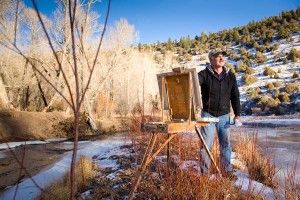
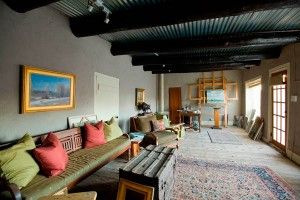
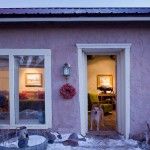
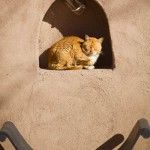
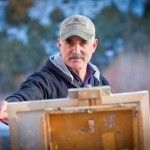
Pingback: Rick Howell studio visit « touching the shutter